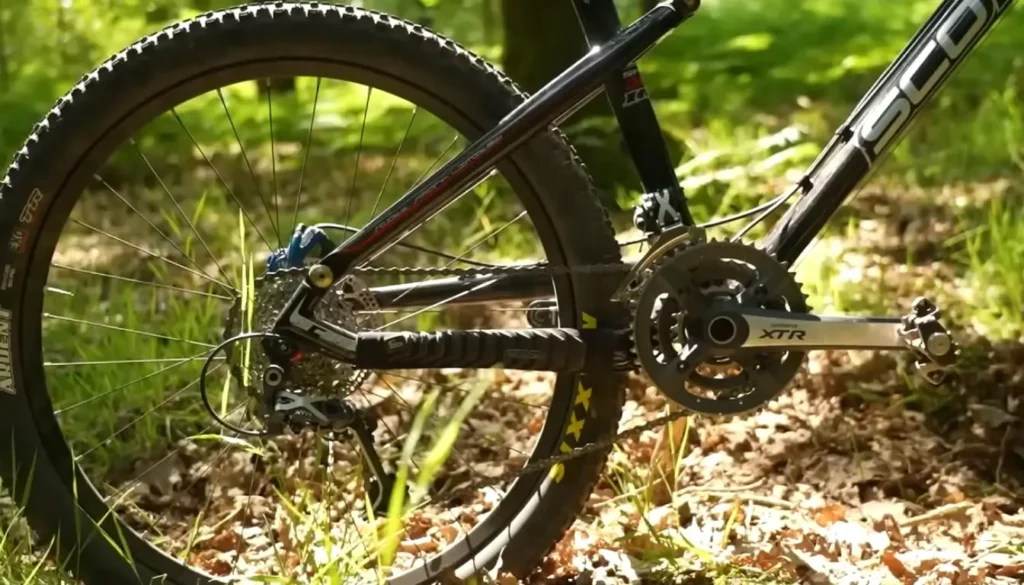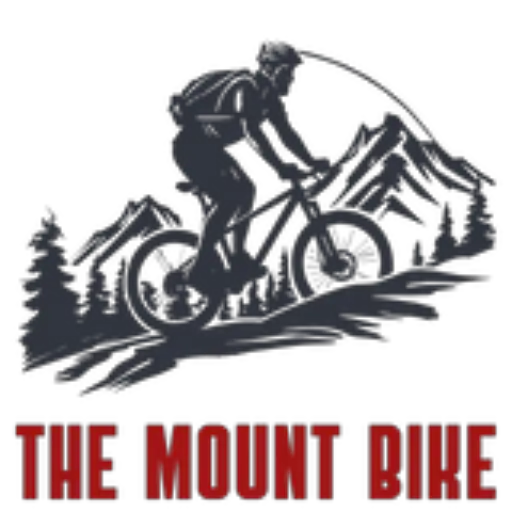Ready to maximize your mountain bike riding experience?
If so, the first thing you need to know is what gears to use on a mountain bike and when. When I was riding a bicycle, playing with bicycle gear was simple. But when I shifted to MTB riding, I faced a tough pedaling due to not being able to shift gears in the right way. Like everyone, I was also confused about what gear to use on a mountain bike. Then I did tons of research, experiment and finally, I found my preferred gear and the right way to use them.
I know starter MTB riders face gear problems and have many gear-related questions in mind. I don’t want you to struggle and spend hours after finding the answers as I did. That is why I have outlined today’s article with some gear-related questions that I often get from my readers.
After reading this article, I hope all your gear confusion will be cleared. So ready to get started? Then scroll down, and Let’s get riding!
What Gear to Use on Mountain Bike?
To heat the mountain trails, you’ll need to equip your bike with the right gears. But what is the right gear you can use on a mountain bike? Gears are lots there but not each one is your need.
The perfect gear is 2×10 to use on mountain bikes to ride uphill and going downhill. Here you will have 2 bike chains in the front and 10 rear sprockets.
Or, if I say clearly, it’s high gear that usually most MTB riders use. This gear ratio is best for any level of mountain biker. enjoy a ride with this bike gear.
Maybe you are thinking about why 2x is best to use on a mountain bike when 1x bikes are grabbing the market these days.
2x is higher resistance, because it has a larger chainring with great chain angles that cause chainplates scraping, and it’s harder on cogs. So going uphill and downhill both are efficient with 2x. While the 1x has smaller chainring and cog that cause higher chain tension and as a result faster chain speed, that is not best for mtb riding. But if you are an experienced mtb rider you may try this. Because only stronger riders can handle 1x mtb bikes on difficult trails.
How Many Gears Do You Need on a Mountain Bike?

The number of mountain bike gears you need on your bike depends on the terrain you are riding. A mountain bike is designed for climbing uphill and going downhill. And to do real mountain bike riding, you will need a good range of gear.
To ride a mountain bike on mountain trails, 7 to 27 gears are sufficient. Usually, A mountain bike has 1 to 40 gears, but extra gears are absolutely not needed on a mountain bike. In fact, 10 and 15 gears are obsolete these days.
Generally, you will need at least a 3-speed gear system on a mountain bike, but if the mountain trails are smooth, you can ride it with 2 gears or even without gear. As we know, mountain bikes are not designed for riding on flat roads, so gears less than 7 are not fitted for a mountain bike.
In the same way, gears over 27 to 40 are meant for higher speeds, and mountain bikes aren’t like gravel bikes to ride at higher speeds. So 27 to 40 gears are just not needed for mountain bikes if you are not an aggressive rider.
How Many Gears Are Best on Mountain Bike
Gear selection is one of the most important decisions for mountain bike riders. The best gear range will ensure better performance. So which gears are best for mountain biking? The best gears are the ones that allow you to ride at a moderate pace without getting too fatigued.
2 chain and 11 rear cogs are best on a mountain bike. These gears make a 21-speed bike to deal with climbing and descending with minimum physical effort. Downshift for climbing up and upshift for going down.
I personally prefer to use the 21-speed bike because I am comfortable with it.
When I climb uphill, I upshift to lower gear (16speed), also known as easier gear, and while going down, I downshift to 21 speed (harder gear) to make sharper turns. It allows me to cover more ground in a shorter amount of time, making it easier to stay on the slopes.
Some riders switch to the highest gear while riding over the flat road to tackle the trails faster, but I never tried riding smooth trails at a higher speed because mountain biking isn’t about going fast. So I love to ride in middle gear (left shifter) while riding over flat roads and enjoy the ride.
How Many Gears Does a Mountain Bike Have?

Mountain bikes can have different gears from each other if their front chainring ( front gear) is different. While Some mountain bikes come with 1 chain in the front and 4 to 12 cogs in the rear derailleur, some come with 2 chainrings in the front and 4 to 12 cogs in the rear derailer. And some mountain bikes are also there that come with 3 chainrings with 4 to 12 cogs in the rear cassette. If we multiply the chain with the rear gear, the low gear we get is 4, and the high gear we get is 36. But this isn’t the gearing limitation. These days some riders are customizing their mountain bikes with single-speed easiest gear, and some are changing gear with 40+ higher gear for pedal stroke.
So, generally, a mountain bike can have 1 to 40+ gears. If it’s a regular mountain bike, you will get a maximum of 36-speed, and if it’s a customized mountain bike, you can get a 40+ gear shifter.
Nowadays, most brands are designing high-end mountain bikes with 1 chainring in the front ( left shifter), and a larger cassette on the rear wheel with more cog. Because it makes the bike lightweight and more efficient gearing. Triple chainring in the front is very rare; they make shifting gear more complicated and confusing for beginners.
Is 16 Gears Enough on a Mountain Bike?
The best gear shifter for a mountain bike depends on the terrain you will be riding on and your personal riding style. Do you ride in a fast or slow manner? If you are a fast rider, you will likely need more gear than someone who rides more slowly.
16 gears might be enough for some mountain bike riders, but it may not be enough for others. Generally, you can ride a 16-gear mountain bike on flat ground or medium to challenging terrain.
Plus, you can do both climbing and descending with 16 gears. But if you want to do mountain biking mostly on off-road like rugged trails, you will need to switch up to a little high gear like 2 chains in front and 9 cogs in the rear derailleur ( 18 speed) or 2 chain wheels in the front and 11 cogs in the rear cassette(21 speed). But as we said above, it also depends on your riding style. If you love to ride slow, you may continue off-road riding with 16 gears. However, for most mountain bike riders, 16 gears are just for riding over smooth pavement; this isn’t enough for them to ride over difficult mountain trails.
What Gears To Use When Going Uphill
There are multiple gears that we usually need to ride an MTB bike. But when going uphill, it is important to use the correct gears. If you are in a bicycle, mountain bike, or road bike mode, you will need to use the gear corresponding to the trails because different gears are designed to ride over different trails.
When you have to climb and incline a lot, choose the low gear, it will slow you down and will reduce the required amount of energy to climb the hill. On the other hand, if you shift into the highest gear to maintain the same ground speed, it will require more energy to pedal. So upshift lower gear ( easiest gear) to go up.
What Gears To Use on Flat Road
When riding on a flat road, there are a few gears that you should use to maximize your efficiency. First, use the lowest gear possible to maintain a slow and steady pace. Second, use the middle gear to cover more ground without having to stop and change gears. Finally, use the highest gear possible when you need to speed up or cover more distance in a single trip.
Generally, Middle gear is used to ride over flat roads without difficulties. It will reduce the amount of stress on the bike, keep the bike operating at its best, and minimize the chances of damage.
Additionally, with the middle gear, you will be able to ride for a longer period without fatigue. This is important because Flat Roads can be difficult to ride on if you use the gears appropriate for hills or mountains.
What Gears To Use On Downhill Riding
When choosing the gear for mountain biking, you have to match the terrain you are riding on. It should give you the power and speed to go downhill safely.
When you have to ride downhill and decline, go with high gear. It’s safe and efficient and will maintain your speed while cruising down the hill. It will also allow you to stop on a dime when you need to.
Higher gears allow riders to stay in the saddle and make more turns, which gives you a better view of the terrain and makes it easier to navigate. At the same time, if you use a lower gear for downhill riding, it can cause the rider to lose traction and control, leading to a crash.
Sometimes entry-level riders can use middle gear to ride simply uphill, but that will be a harder gear that will cause pedal stroke and imbalance.
Conclusion
Finding the right gear that matches your riding trail and style needs a lot of experimentation. But by answering gear-related questions, I think I have reduced your workload. Now you know what gear to use on a mountain bike, what gears a mountain bike has, and what gears you need on a mountain bike. I hope these answers allow you to find the gear you need easily.

I am Ryan Ford, a mountain biking enthusiast who loves to explore the outdoors. I also like to go on adventures with friends and anything else that involves being outside. I love my bike because it gets me out of the house and gives me an opportunity to enjoy nature.

